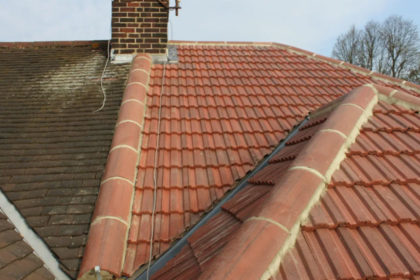 How Old Should a Roof Be Before Replacing It?
How Old Should a Roof Be Before Replacing It?
Your roof works wonders, keeping you safe from the elements year after year — but it doesn’t last forever. It needs regular upkeep, of course, but sooner or later its condition will get to the point where replacing is more efficient than repairing.
But how long is that likely to be? It depends on a number of factors.
Different Roofing Materials
The crucial factor in your roof’s life expectancy is the materials used, and this can vary considerably. On the whole, the shorter-lived materials tend to be cheaper but make sure you calculate whether saving money in the short term will ultimately cost more than going for a more expensive but long-lived material.
There are innumerable roofing materials, but the most common are:
- Clay or cement tiles — Although individual tiles will be damaged and need to be replaced, this is easily done and will extend the roof’s overall life. A tiled roof should last over 100 years if it’s looked after.
- Slates — Even tougher than tiles, slates might last up to 150 years, and in the meantime can be replaced individually like tiles.
- Felt — Most often used for flat roofs, the quality of felt varies considerably. If well maintained, good-quality felt should last around 20-30 years.
- Liquid rubber — Also often used for flat roofs, though also effective for pitched roofs, liquid rubber will last 40-50 years if installed correctly.
- Metal — Various metals can be used for roofing, such as copper and aluminium, which can last between 40 and 80 years.
Roofing Damage and Maintenance
Whatever it’s made of, your roof will be getting a regular battering, and its life expectancy will depend partly on how extreme this battering is. For example, more damage is likely to occur if it’s exposed to the prevailing wind and rain. Similarly, a roof that’s regularly exposed to extreme temperatures will expand and contract, creating stress damage.
Much of this can be offset by regular maintenance, whether replacing tiles or slates, repairing other materials or cleaning off any growth of moss or mould. You need to inspect your roof a minimum of twice a year, as well as after any extreme weather, but this is worth doing since good maintenance can extend the life of your roof.
Quality of Workmanship
Choosing good materials and regular maintenance can both ensure a longer life for your roof, but the single most important factor is to have it installed by experts. Whether it’s a question of how securely the tiles or slates are attached or the laying of the felt or rubber, high-quality construction will give your roof a flying start.
Get in touch with us to find out how to ensure your roof lasts as long as possible.
Learn the difference between re-roofing and a new roof here.









